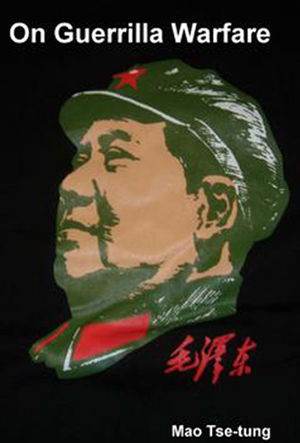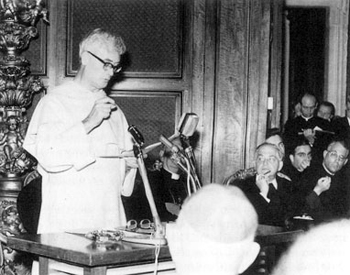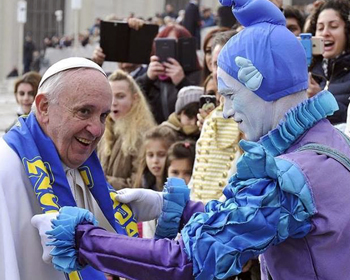FRANCIS' NEW CHURCH FORGES FORWARD
A reader of the TIA website sent me this request, which I am answering in today’s column:
“Mr. Guimarães, We have seen Pope Francis taking many revolutionary measures to change the Church. He has moved and shaken every part of the Church’s structure. I see that he has a plan, but I do not see its guidelines. I ask you the favor of giving me what I cannot grasp. If you could, I would consider this a true work of mercy. Thank you. P.M.M.”
“Mr. Guimarães, We have seen Pope Francis taking many revolutionary measures to change the Church. He has moved and shaken every part of the Church’s structure. I see that he has a plan, but I do not see its guidelines. I ask you the favor of giving me what I cannot grasp. If you could, I would consider this a true work of mercy. Thank you. P.M.M.”
Mr. P.M.M., I will gladly try to assist you in this request. When you say that you are disoriented, you reveal that a part of Francis’ plan is working the way he wants.

Bergolio applies the guerilla tactics of psychological war
When the full army is ready to engage in combat, the group of guerillas halts the attack and disappear into the forest. The army waits, sends scouts to seek out the enemy, but finds no one. After some time has passed, the commanders order the army to return to the barracks and rest.
The soldiers return to their sleep, and another guerrilla group frenetically attacks the campsite from another side, obliging the whole army to prepare afresh to engage in combat. Again, the guerillas disappear and after a while the army is ordered to bed. We see that having three of these attacks every night can keep an army in a state of unrest and disorient their commander about the enemy's plans. This is the goal of the tactic. It is not a maneuver of military conventional war, but a tactic of psychological warfare.
I believe that Francis is applying something like this in the surprise attacks he has been making for more than three years in different fields of the Catholic Church. He wants to destroy, it is true, but also wants to disorient. This, then, is the first part of my answer to you. The surprise in his attacks is part of guerilla strategy to keep people nervous and disoriented.
In the second part of my response, I will try to give you an idea of Francis’ real plan.
It is my conviction that he is bel et bien [surely] following an agenda prepared for him by the same German clique that has been governing the Church since the end of Paul VI”s pontificate. By this, I mean that it was this faction that elected and controlled John Paul I, John Paul II, Benedict XVI and that more recently brought Jorge Bergoglio to the Pontifical Throne and is telling him daily what he should do.
Since the progressivist agenda was essentially paralyzed until Ratzinger abdicated, the Germans chose to replace him with an Argentine puppet-clown with airs of a tyrant so that their progressivsts agenda would move forward.

More than 60 years ago Schillebeeckx was preaching a synodal Church at Vatican II
Years ago, Fr. Edward Schillebeeckx, O.P., a famous Dutch perito in Vatican II, laid out these principles that seem to set the footing for Francis’ Synodal Church:
“As time goes by, it is to be hoped that the mutual communion of local churches will function with more flexibly, for example, through the Synod of Bishops. It has already been clearly stated that this communion between the local churches and Rome works better in a collegial way, as opposed to the pre-synodal system of one [papal] authority opposed to all others. This collegial-synodal principle must now become operative in every process of communication – concretely, for instance, in the preparation of formal synodal gatherings.
“I would like to strongly emphasize the synodal principle. Here also, a central authority continues to exist, but it functions at the service of and fully integrated to a synodal and democratic structure, which is at the same time a specific structure of the Church. When the center [the Pope] is separated from and opposed to all the others, difficulties in communication are inevitable, and this at a time when a new self-understanding of the Church conceives this same Church as the sacrament of inter-human communications and dialogue.
“Needless to say, this democratic, synodal principle also applies to the lowest layers of the ecclesiastical structure in each ecclesiastic Province or Diocese ... The formula that was adopted at the Pastoral Council here in Holland, for example, seems to me characteristic of this new synodal principle: It is not the Bishops who make decisions after consulting others, but the Episcopate along with all the faithful. Everyone has an active voice in the decision-making process ... This is a totally new formula that is not found anywhere else in the Church. If successful ... it could become a kind of model and example for others.” (1)
Another theologian who gives us essential traits of the Synodal Church that Bergolgio is struggling to impose is Austrian Fr. Ferdinand Klostermann. He sheds more light on the essence of Synodality in the Chuch:
“Also, for choosing the Pope, it would be necessary to find a form of election that made the co-responsibility of the whole Church visible and effective. The Synod of Bishops or, as was proposed a short time ago, the presidents of national Bishops’ Conferences, who certainly would discuss the choice of candidates with their colleagues, would appear to be a much more appropriate elective body than the present College of Cardinals. At the same time, the head of important Christian dicasteries around the world could also belong to the elective body. And a world secretariat of the laity could open the possibility of the collaboration of Christians throughout the world; [religious] orders should also be represented.” (2)

The puppet Francis clowning with a fellow clown at the Vatican
“The problem of an eventual change in the naming of the Pope should be allowed to mature. The changes that are occurring today, with respect to forms of government and the general exercise of authority, will have repercussions even inside the Church. With this, it might also be possible that one day the Pope will be elected by an assembly that includes Cardinals, Bishops and, finally, representatives of the rest of the Clergy and of the Christian people. . ” (3)
P.M.M., you can see that these theologians wrote these guidelines a long time ago. However, they continue to be incredibly timely. The bosses who control the Francis Revolution are not inventing anything. They are following that same old agenda that Progressivism swore to impose on the Church by the iron fist of a German clique; Bergoglio is just its obedient puppet-clown.
I hope these comments may help you.
Cordially, A.S.G.

Tactics of guerilla warfare keeps the opposition in a state of disorientation
- E. Schillebeeckx, “Fundamento da autoridade na Igreja,” V.A., Cinco problemas que desafiam a Igreja hoje,, Sao Paulo: Herder, 1970, pp. 42-43.
- F. Klostermann, “Principi per una riforma di struttura della Chiesa,” V.A., La fine della Chiesa come società perfetta,, Verona: Modatori, 1968, p. 278.
- Alfredo Marranzini, “Summary” of Gustave Thils, Choisir les Évêques? Élire le Pape? , Paris: Lethielleux, 1970, in La Civiltà Cattolica, June 5, 1971, p. 506.
Bernard Janzen "Fr. Malachi Martin: Camouflaged Apostasy"
